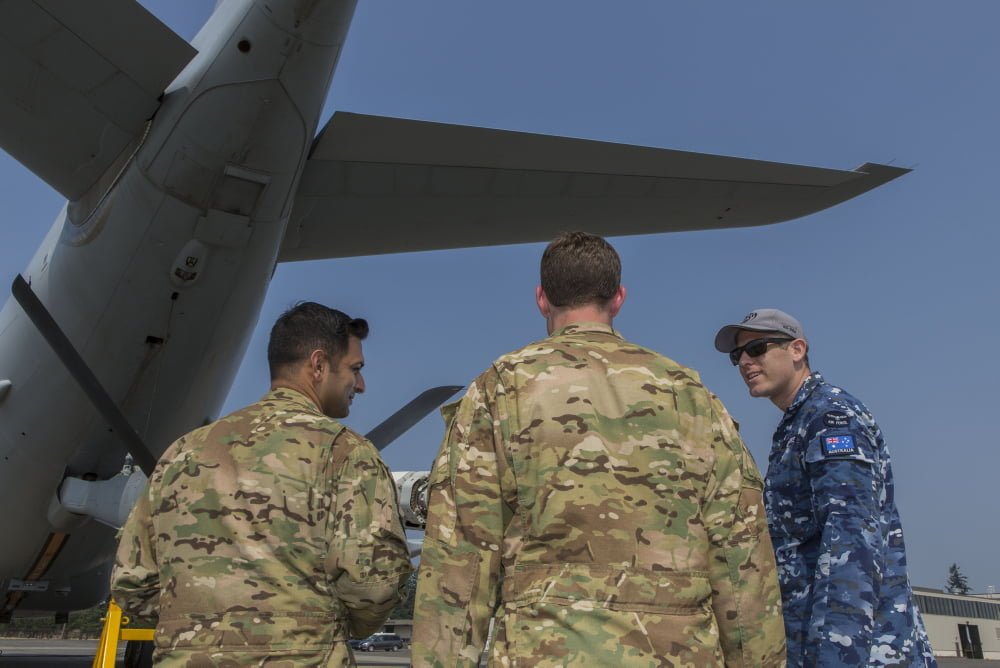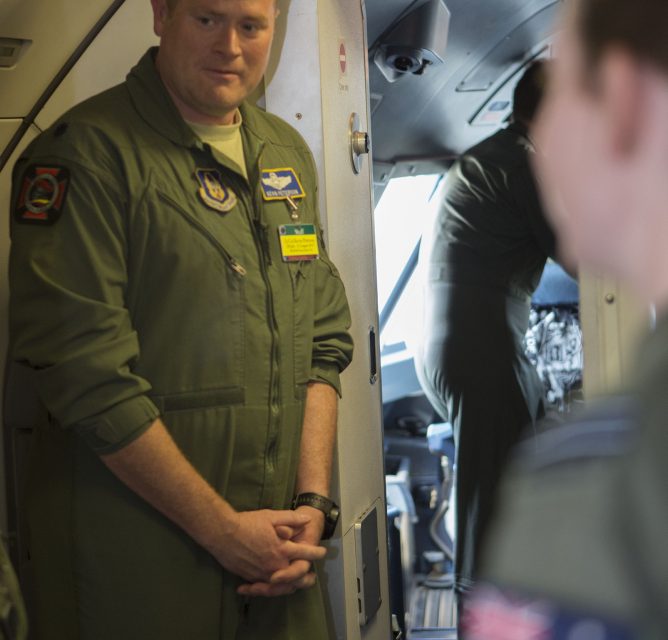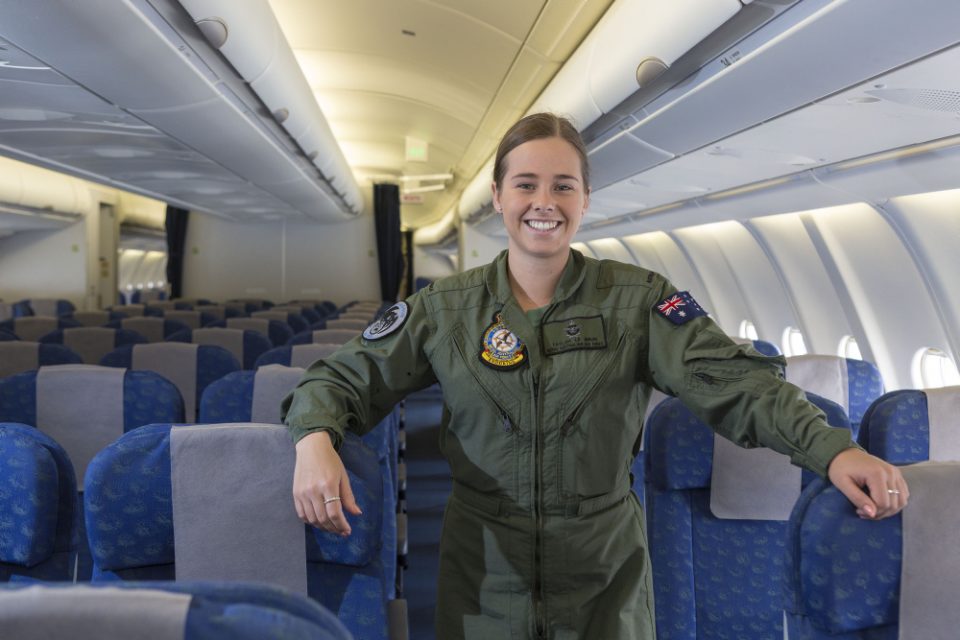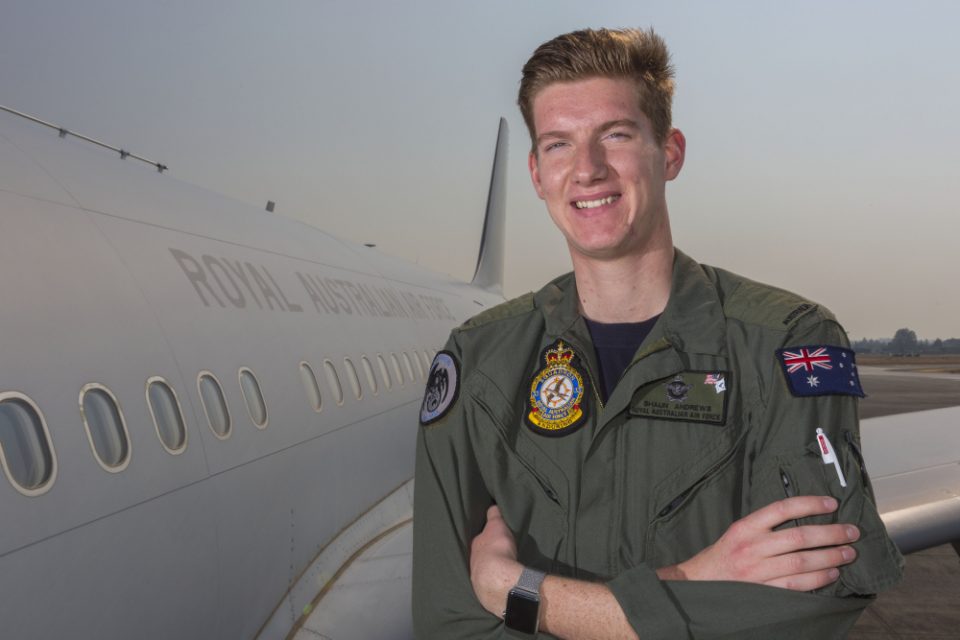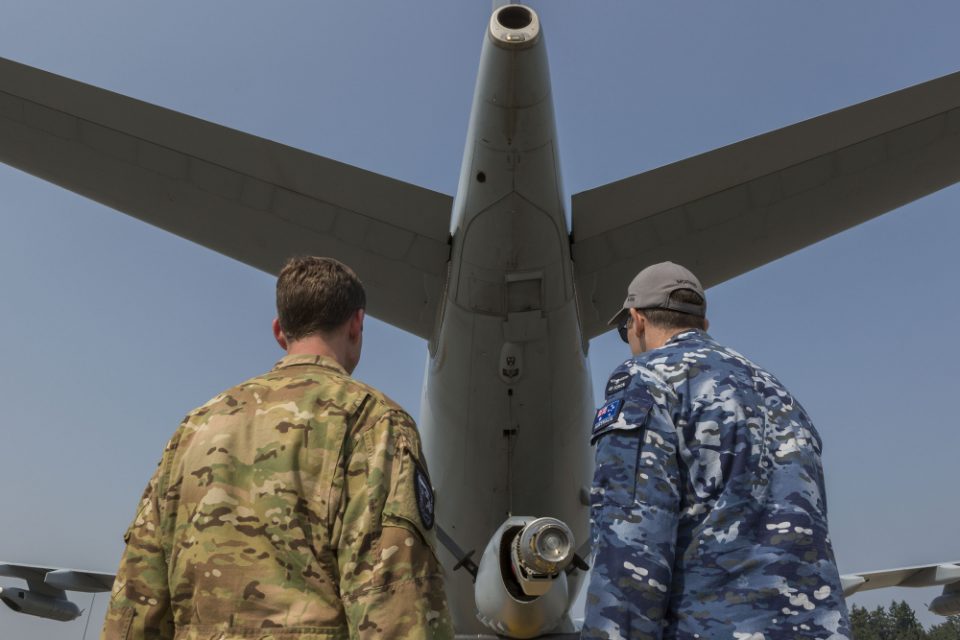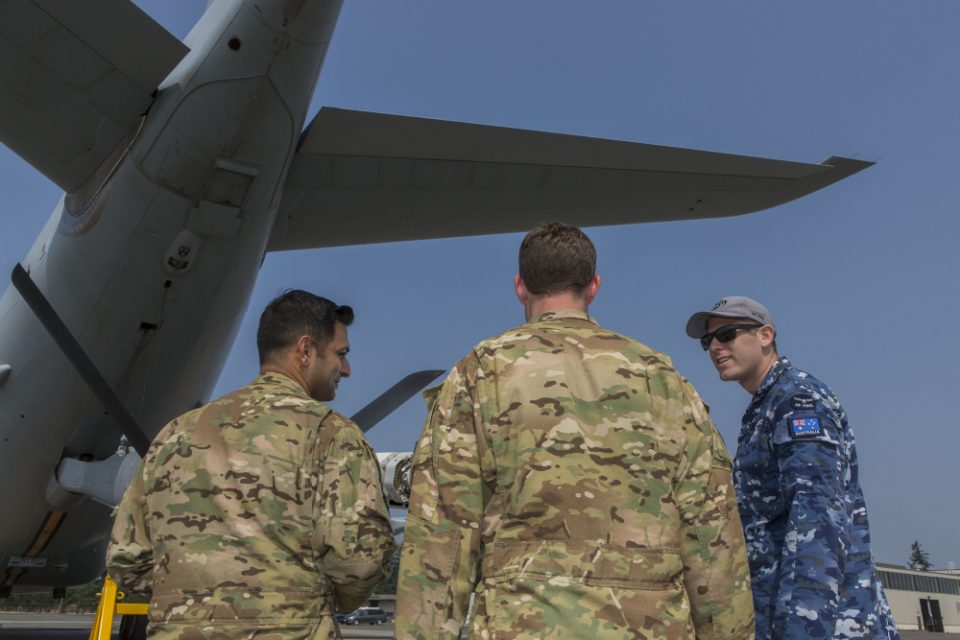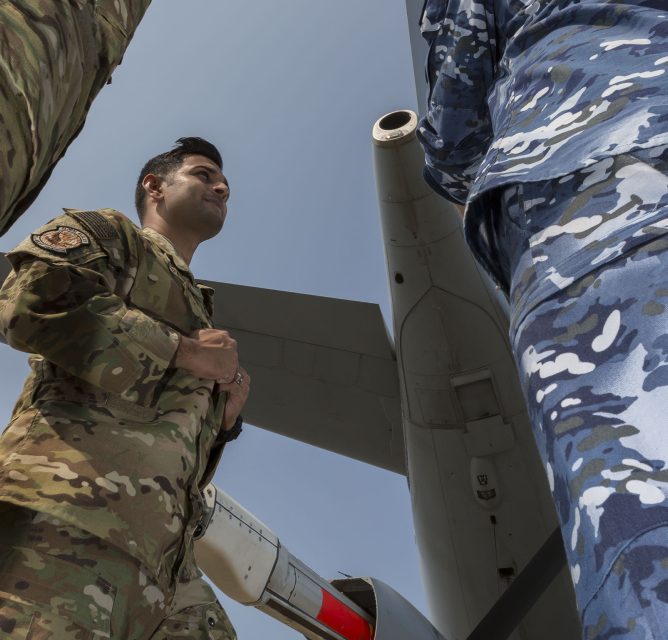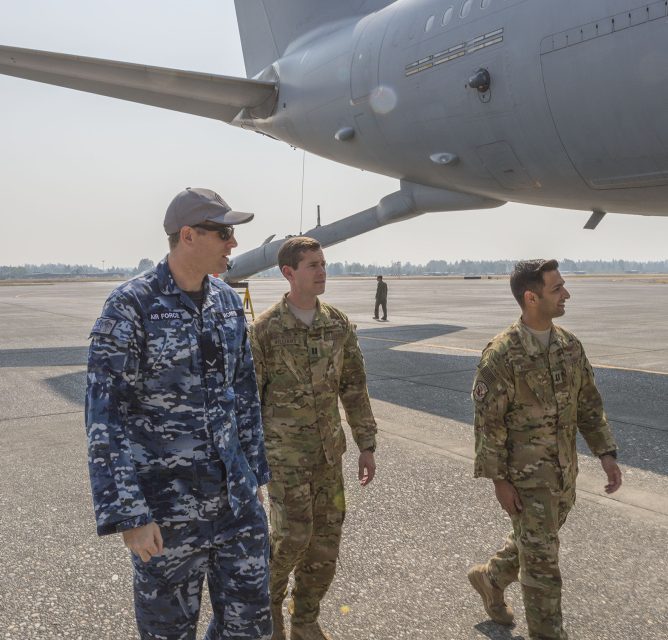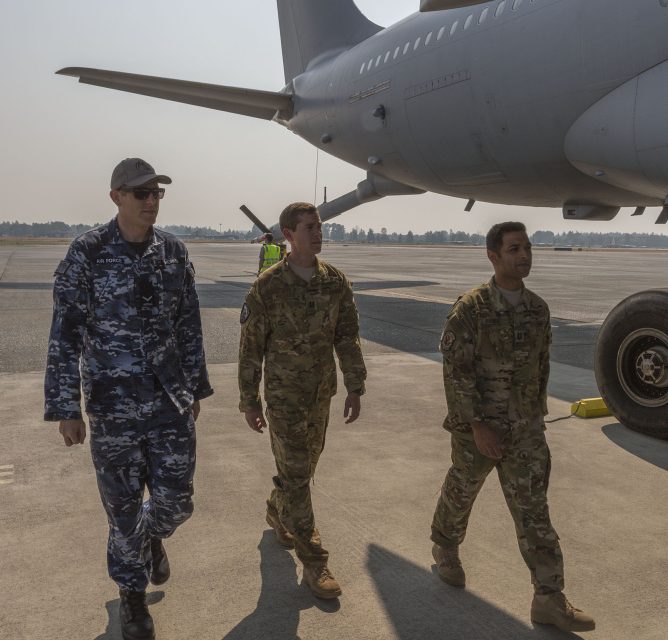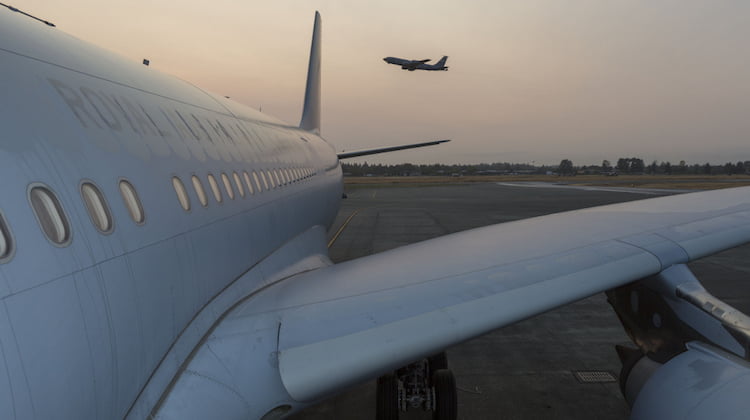2017-08-18 By Robbin Laird
During my current trip to Australia, I had a chance to talk again with the Air Mobility Commander of the Royal Australian Air Force, Air Commodore Richard Lennon.
We last met earlier this year at Amberley Airbase.
During that visit, Air Commodore Richard Lennon, the head of the Air Mobility Group and Group Captain Adam Williams, the officer commanding 86th Wing as well as the CO of the 33rd Squadron (KC-30A), provided an update on the command and its activities.
https://sldinfo.com/building-tanker-2-0-the-aussie-perspective/
In that interview and in earlier interviews with the two airpower leaders we discussed the evolving operational experience of the RAAF in operating the C-17/KC-30A dyad.
During this interview, we focused on the RAAF’s recent participation with the dyad in the latest Air Mobility Command exercise, Mobility Guardian 2017.
With the heightened concern of the necessity to prevail in contested battlespace, there is enhanced training for such operations.
Mobility Guardian 2017 is part of this strategic shift in learning the skills necessary to operate in a contested battlespace and to prepare for high tempo and higher intensity operations.
Air Commodore Lennon described the focus of Mobility Guardian 2017 as follows:
“The exercise was the first of its type held in a very long time.
“The exercise focused on integrating the efforts of several partner air forces using their air mobility fleets in contested airspace to support force insertion.
“We were required to seize an airfield, establish a point of disembarkation, and through that process we were required to conduct aeromedical evacuations and airdrop missions to support ground forces.”
A key part of the exercise was working tactics and procedures with fighters to provide force protection for the air mobility fleet as it operated to support the force insertion effort.
US F-15s and A-10s accompanied the air mobility fleet in shaping the tactics and procedures for operating the fleet in a contested air environment.
The exercise has been two years in the making. Approximately 50 aircraft were involved with several thousand airmen participating in the exercise.
The Aussies brought their C-17 and KC-30A crews to the exercise as well as air dispatch, aeromedical evacuation, force protection and contingency response personnel.
A key challenge within the exercise was shaping interoperable procedures for operating in a contested air environment as each air force had evolved its own procedures over time.
Clearly with a higher tempo operation getting significant sortie generation rates and air dropped delivery is crucial to combat success.
“Our operations for over a decade in the Middle East have been largely in uncontested airspace where we’ve had control.
“In this exercise, we were really testing the readiness of our forces to rise to the next level and work in a challenging environment, and challenging environment it was.
“The exercise program was ambitious.
“It ran twenty-four hours a day for ten days.
“There was no let up, and everyone in the exercise was working hard.”
In an earlier piece, we noted that the French and British Air Forces had introduced the A400Ms into the exercise. And Air Commodore Lennon had this to say about the inclusion of the new aircraft in the exercise:
“I was fortunate to have a flight on the French A400. It’s an impressive aircraft.
“The capacity of it’s between the C-130 and the C-17, but it operated quite well in the exercise.”
What were the major lessons learned from the exercise?
“There were a number of key tactical lessons learned.
“Notably, we need to alter procedures across the various Air Forces to ensure more rapid responses and smoother interoperability.
“The exercise highlighted the central importance of the kind of modernization we are doing with the C-17 and the KC-30A to provide for enhanced situational awareness and communications capabilities.
“We learned that we did not have all the information available which we needed and we were not able to process it rapidly enough; we are working with technologies and procedures to change that.”
“A key part of the exercise was working our con-ops with fighters to provide effective counter air.
“We matured our understanding of the procedures required to work effectively with counter air operations in support of the air mobility forces.
“A significant number of command and control and communications networks come into play during the activity once you bring in that counter air support, or escorts for the formation.
“Communications gets very complicated, very quickly and tests capacity.
“This is a major area of work for continued development.”
The Air Commodore emphasized that the results from this exercise and others were being inputted to the new RAAF Air Warfare Centre and the Air Mobility Group was working closely with them in evolving procedures and tactics for working in contested environments.
“The establishment of the Air Warfare Centre provides a great opportunity for us to improve our tactics techniques and procedures.”
The Air Warfare Centre exists within Air Command and is critical to establishing the RAAF as a modern and fully integrated combat force that can deliver air and space power effects in the information age. The AWC is supported by an integrated workforce which includes Air Force, Army, Navy, Public Service and Defence Industry personnel.
The vision of AWC is: “Excellence in Integrated Air Warfare for optimal Joint Effects”.
Its mission is to: “Deliver Integrated Air Warfighting solutions for superior combat effectiveness”.
The goals of the AWC are to provide:
- A focal point for bottom up innovation at the tactical and operational levels
- Coordinated and integrated tactics and procedures development across all AF platforms using live, virtual and/or constructed (LVC) environments
- Coordination of Science and Technology (S&T) and Research and Development (R&D) effort across AF
- Testing of current and proposed Concepts of Operation (CONOPS) against force structure and higher level Defence plans at the operational and tactical level
- Collation of lessons learned through experimentation for inclusion in strategic planning, capability development, doctrine development, and exercise planning
- Exchange of ideas across the ADF and the Coalition.
The AWC is comprised of the following:
- HQ AWC – responsible for the coordination and implementation of common and integrated functions across the AWC IOT meet the AWC Mission
- Test and Evalution Directorate – the ADF service provider to AF and Army for specialised flight T&E, aviation medicine support, aeronautical information products, stores clearance and aviation systems engineering support
- Information Warfare Directorate – centralises the AF’s tactical information warfare elements and provides the wider RAAF with an integrated and tailorable operational support capability drawn from across the Intelligence, Electronic Warfare and Information Operations domains. It enables the coherent development and management of the RAAF’s Information Warfare capabilities
- AF Ranges Directorate – I the primary provider of Air Force Air Weapon Ranges and Live, Virtual and Constructive (LVC) simulation to enable the testing of war materiel and the training of AF capabilities in order to deliver more effective warfighters
- Tactics and Training Directorate – focuses on the development of multi-discipline high end integrated tactics and training across the AF through a combination of training, education engagement and integrated exercises.
For earlier interviews with Air Commodore Lennon, see the following:
https://sldinfo.com/building-tanker-2-0-the-aussie-perspective/
https://sldinfo.com/the-evolution-of-the-raafs-air-mobility-group-its-contribution-to-plan-jericho/
For earlier articles on Mobility Guardian 2017, see the following:
https://sldinfo.com/raaf-participates-in-mobility-guardian-2017/
https://sldinfo.com/mobility-guardian-17-building-the-drop-payload-2/
https://sldinfo.com/mobility-guardian-17-aero-medivac-contributions/
https://sldinfo.com/rcaf-at-mg-17/
The slideshow highlights the RAAF at Mobility Guardian 2017 and the photos are credited to the Australian Department of Defense.


